U.S. Primed for Climate Troubles
Air Date: Week of May 5, 2023
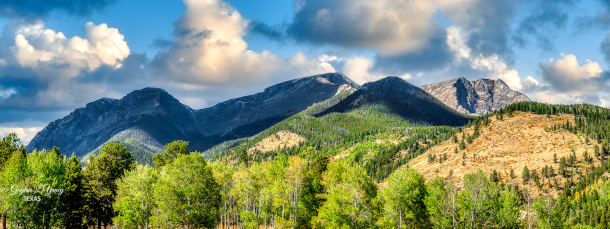
When dry air from the Rocky Mountains combines with moist air from the Gulf of Mexico, severe weather can brew. (Photo: G. Lamar, Flickr, CC BY 2.0)
Because of its unique geography, the United States is particularly vulnerable to nearly every kind of weather-related disaster: tornadoes, hurricanes, wildfires, and more. And as Associated Press science writer Seth Borenstein explains to Living on Earth’s Aynsley O’Neill, these natural disasters are getting an unnatural boost with climate change.
Transcript
BASCOMB: It’s Living on Earth, I’m Bobby Bascomb.
DOERING: And I’m Jenni Doering
As we talked about before the break, a shift towards an El Nino weather pattern and record high ocean temperatures are troubling developments for much of the world, especially the United States. Thanks to our unique geography, the US is particularly vulnerable to nearly every kind of natural disaster. We have more tornadoes each year than any other country in the world. We are also prone to hurricanes, wildfires, and blizzards. These natural disasters are getting an unnatural boost with climate change and the US can expect to be ground zero for more destruction in the coming decades. For details we called up Seth Borenstein. He’s a science writer with the climate and environment team at the Associated Press. He spoke with Living on Earth’s Aynsley O’Neill.
O'NEILL: So what geographical features make the United States so uniquely susceptible to extreme weather?
BORENSTEIN: Well, you've got two oceans, the Atlantic and the Pacific. And then you have the Gulf of Mexico, which is a third coast. And then you have the Rocky Mountains right through the middle of the United States going north south. The United States is also in the mid latitudes, where you get the difference between the cold in the polar regions, and the hot in the tropics. And then you also have the Jetstream, which comes whizzing through. And it's along that Jetstream that's the instability. On one side of the Jetstream you have cold, and the other side, you have hot. I mean, you just look at the United States, it's almost like there's two weather patterns, one country. West is dry and getting drier and the East is wet and getting wetter. So all of those sort of combine in different ways to cause various weather extremes. I mean, tornadoes, hurricanes, wildfires, blizzards. You get nearly every possible one in the United States. And in many of them like tornadoes, you get it far more than anywhere else.
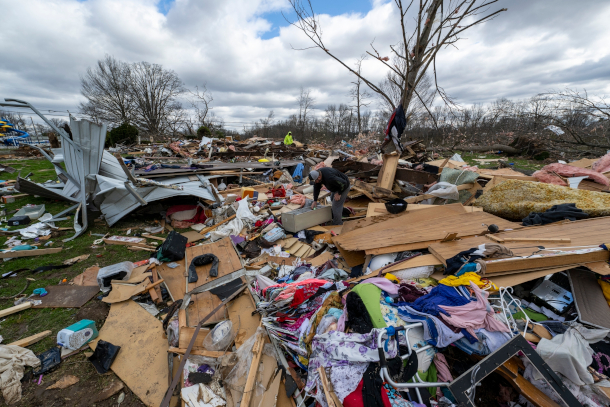
The US is a hotspot for tornadoes worldwide, experiencing around 1200 of these devastating storms each year. (Photo: Dough McSchooler for Associated Press)
O'NEILL: So lots of other countries will certainly have coastlines and huge mountain ranges, you know, the Himalayas or the Andes. And well, in places like Australia, they're just completely surrounded by water. So how do the weather hazards of these other countries compare to those of the United States?
BORENSTEIN: Well, Australia does have some of those issues. But if you think about it, much of these changes also brew in the center. If you have hazards in the Australian Outback, it doesn't affect many people, because there are a few people. The other thing is Australia, it's not quite in the same place where you have sort of the Jetstream plunging through. China's another good one, I kept asking when I talked to scientists in terms of comparisons. But what China has is just the one major coast, and it doesn't get the mixing or clashing of air that the US gets. I mean, it's not to say that there aren't natural hazards anywhere else. It's just we get a wide variety.
O'NEILL: Well, geography handed us a combination of dangerous ingredients. But our choices are also playing a role here. How are we exacerbating the situation?
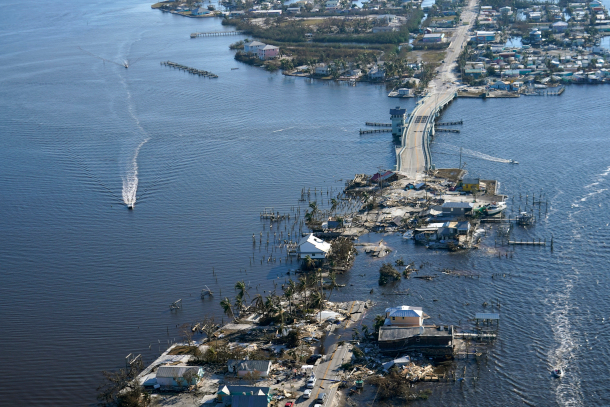
With warming oceans hurricanes are likely to become wetter, and therefore more damaging, as the climate crisis continues. (Photo: Gerald Herbert for Associated Press)
BORENSTEIN: The key here is these are not disasters in themselves. Meteorologists and disaster experts emphasize that all these weather extremes are hazards, but they're not disasters. What makes them disasters is the human factor. If you have a tornado ripping through the Kansas wheat fields, and there's no one there and no buildings, it's not really a big deal. It's not a disaster. It is just nature. But it's when there's people and buildings in the way that it becomes a disaster. And we are putting people in places that are a little more dangerous. Think of all the construction along the US Eastern and Gulf Coast, which are hurricane prone. People build on areas where they have had total losses. And then they get hurricane insurance, federally funded usually. And then they build again in the same place. And some of the scientists said, you know, we don't do building codes as well as we should. For example, in hurricane areas, you can buy hurricane clips, which are like $20 or so, $10 to $20. These are these metal clips you put on your roof beams to help attach and keep your roof during a hurricane. And many places don't require that. It's such a cheap thing. In Tornado Alley, some places cannot build basements, but basements are crucial, or some kind of tornado shelter. A little bit under 50% of deaths they find in tornadoes, are in mobile homes or manufactured houses. If you're going to have mobile homes, maybe mobile home parks should all come with tornado shelters for people to go to. I mean, nature has dealt us a really lousy hand in terms of geography, but then we have made it so much worse.
O'NEILL: Well, the science tells us that climate change will be making storms worse, there'll be making them more common, more intense, but how exactly will they start changing in the case of something like a tornado or a hurricane?
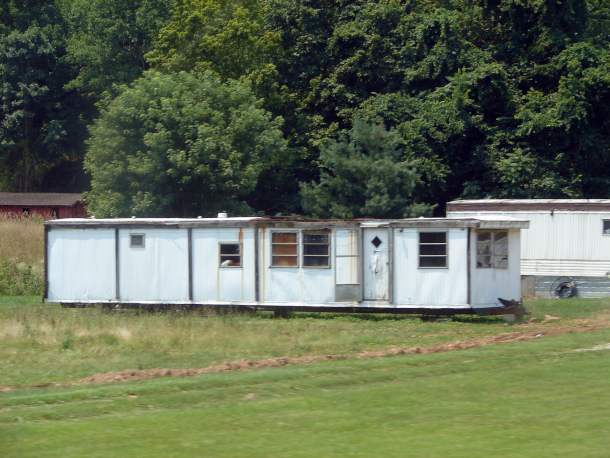
Mobile homes do not have basements, making them more dangerous during severe weather. (Photo: Quinn Dombrowski, Flickr, CC BY-SA 2.0)
BORENSTEIN: So first, tornadoes, it's more of an issue of movement. So in the Great Plains, sort of considered Tornado Alley, computer models show tornadoes decreasing in frequency there but dramatically increasing eastward like Arkansas, Mississippi, Alabama, Tennessee, Kentucky. And scientists have seen these trends starting to happen already. And eastward means more people, more poverty, more density, more trees. So you don't see the tornadoes coming. Like in Kansas or Oklahoma, you see them coming from miles away on, along the prairie. You know, if it's coming through Little Rock, there are trees in the way, you don't see a storm. And the scientists have found when there's tornado warnings, one of the first things people do is they go outside to take a look to see, ooh, is it dangerous looking. And then, and then if it looks dangerous, then they will go in the basement and take shelter. So if you can't see it because of trees and buildings, or if it's nighttime, and in the mid south, we're getting more tornadoes later at night, it's more dangerous. Then with hurricanes, most scientists are now saying more of the stronger hurricanes, and definitely wetter hurricanes. So wetter, slower, makes them more damaging. So it's not quite as easy as things being worse. It's just how they're getting worse.
O'NEILL: Sometimes it feels like those of us who live in the United States are experiencing these extreme weather events, if you'll allow me to use hyperbole, every five minutes. What kind of toll do you think that has on the American people or the American psyche?
BORENSTEIN: I think there's all sorts of possible tolls. But for a while, you say oh my god, this is happening every five minutes. And then after a while, oh, it's just another tornado killing just another 10, 15 people. There's a history in the US public of being shocked that stuff that happens, and then accepting lots of deaths as normal. School shootings. COVID. You know, it's shocking, it's shocking, and then suddenly, it's part of our daily lives. And in many ways, you know, if you think about it, weather disasters have become like that.
O'NEILL: Well, what kind of progress if any, have we made in preparing for these disasters?
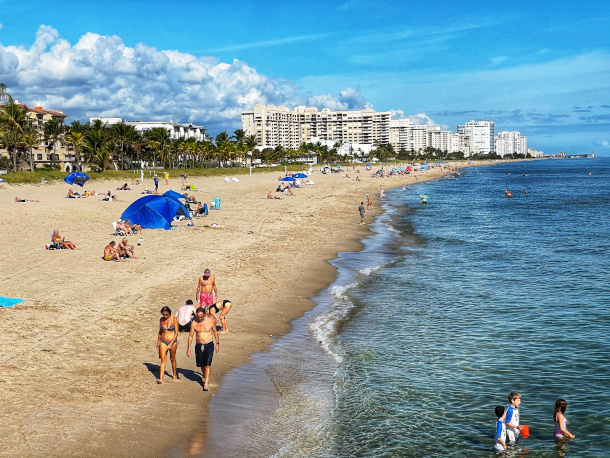
Americans continue to build—and rebuild—along hurricane-prone coastlines. (Photo: Rob Olivera, Flickr, CC BY 2.0)
BORENSTEIN: There are still some good news. For example, lightning deaths the last few years have been at record lows. It's, you know, 10, 12 deaths a year. And in the 50s, and 40s, there were hundreds of deaths a year. And that's because of warning and education. And you know, everyone now knows if there's lightning, get off the golf course, get out of the water. One, people weren't educated in that before. And two, the warnings are so much better. So we're getting so much better about weather forecasts and warnings. The trouble is, there's a disconnect between the warnings out there and how people receive it, and what they do. And also, you know, at some point, there's only so much you can do.
DOERING: Seth Borenstein is a science writer with the Climate and Environment Team at the Associated Press. He spoke with Living on Earth’s Aynsley O’Neill.
Links
Associated Press | “The US Leads the World In Weather Catastrophes. Here’s Why”
NOAA National Severe Storms Laboratory | “Severe Storms 101–Tornadoes”
The Guardian | “‘Tornado Alley’ Is Shifting Into The US East, Climate Scientists Warn”
Living on Earth wants to hear from you!
Living on Earth
62 Calef Highway, Suite 212
Lee, NH 03861
Telephone: 617-287-4121
E-mail: comments@loe.org
Newsletter [Click here]
Donate to Living on Earth!
Living on Earth is an independent media program and relies entirely on contributions from listeners and institutions supporting public service. Please donate now to preserve an independent environmental voice.
NewsletterLiving on Earth offers a weekly delivery of the show's rundown to your mailbox. Sign up for our newsletter today!
 Sailors For The Sea: Be the change you want to sea.
Sailors For The Sea: Be the change you want to sea.
 The Grantham Foundation for the Protection of the Environment: Committed to protecting and improving the health of the global environment.
The Grantham Foundation for the Protection of the Environment: Committed to protecting and improving the health of the global environment.
 Contribute to Living on Earth and receive, as our gift to you, an archival print of one of Mark Seth Lender's extraordinary wildlife photographs. Follow the link to see Mark's current collection of photographs.
Contribute to Living on Earth and receive, as our gift to you, an archival print of one of Mark Seth Lender's extraordinary wildlife photographs. Follow the link to see Mark's current collection of photographs.
 Buy a signed copy of Mark Seth Lender's book Smeagull the Seagull & support Living on Earth
Buy a signed copy of Mark Seth Lender's book Smeagull the Seagull & support Living on Earth

